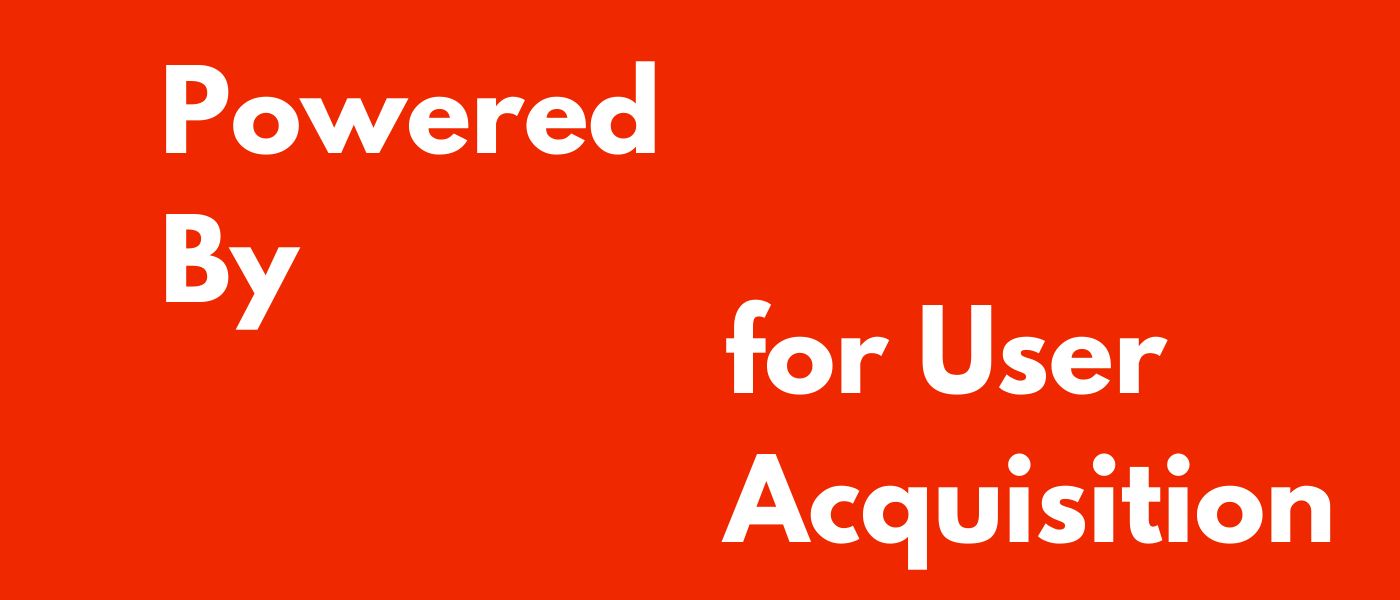After getting to the 100th interview, I’ve noticed a particular acquisition channel that was being mentioned as often as SEO, press outreach and affiliate marketing. The thing is, everyone knows about affiliate marketing and SEO. There are even experts/agencies that solely focus on mastering these channels.
Yet, (almost) no one talked about this one...despite it being consistently (over 43 times) mentioned by founders as a viable growth channel that worked for them. Maybe the reason for this is that this method is so simple to implement...yet so effective.
My Competitor is “Powered by” this tool. I’ll Use it Too.
What we noticed is that as soon as we enter a market, other newspapers start using our app. This is because journalists read their competitors! :-) So usually we had to reach out to 2-3 major newsrooms in a country, and once we get published the majority of the other publications find out about us and sign-up by themselves. (source)
Note: You'll notice that next to each startup (like Widgetic) I provide monthly revenue numbers. This number comes directly from the founder's interview (available if you click on the "source" link at the end of the quote).One of the friends was a local web hosting company. After they started using LiveAgent, we noticed that three out of four other leading local web hosting companies started using it as well, and they all continue to use it now.
Word of mouth and branding displayed on our widgets such as "Live Chat Software by LiveAgent" were bringing in 50% of new leads… (source)
Update: After getting on the HackerNews front page, some people left additional examples in the comment section. One of them was an early employee of Typeform:
Another anecdote (or maybe data point?!): Typeform basically had all the initial growth of the product via a "Powered by" button that was shown in the bottom of each form generated. We did no marketing/sales except having that "Powered By" button shown for forms created by all non-paying users.
Since the "Powered By" button of each form was affected by the number of people visiting each form and some creating their own, leading to more views of the "Powered By" button, we called it "Viral Marketing" (maybe "Marketing" is the wrong word, don't remember exactly what we used to call it) where the growth of the platform funded more growth of the platform, inherently. (source: HN comment)
“Powered by” Does Not Have to be a Link
The Reddit for WordPress theme was actually used as the theme for growthhackers.com back in 2013, but it was heavily customised on the front end with Bootstrap. They kept the same underlying functionality and scripts that I had written.
This got picked up by someone who had found out which theme Growth Hackers was using and asked me how they could customise the theme to "be like Growth Hackers."
This wasn't a straightforward modification, so I agreed to build it for them at a discounted freelance rate and keep the resell rights. This then became my second theme. (source)
Use the power of default
Worked: Native Ads
We place our name and logo in all new Endcrawl projects. Customers can remove them if they like of course, but the power of default is strong. As a result, our name and logo are sprinkled across hundreds of films and will be seen for many years to come.
We encourage all founders to think creatively about what constitutes a "native ad" in their space. (source)
Small guys in an industry want to copy the big guys (often mindlessly). Take, for example, the endless posts on HackerNews about microservices, big data and, similar things, primarily used by big companies like Google, and often (mis)used by smaller startups. Or take the leading video hosting company, YouTube. Every now and then they release a new feature, and smaller competitors are quick to copy it to their sites, without taking into considering whether that feature really makes sense for their site.
“Powered by” marketing is no exception. If smaller guys see that you “power by” the big guys in their markets, they are far more likely to follow suit.
Discourse ($120k/m), now a popular discussion software, gained a lot of their visibility initially by first limiting themselves to big discussion boards. When asked how did they attract users and grew revenue, Jeff Atwood said:
We also focused on getting three big beta customers who, in return for running our rather raw beta software on their real live sites, we promised white glove anything goes support and free hosting for two years, and then at considerably reduced rates thereafter. (source)
A second big win early on was when Software AG, one of the largest software companies in Europe, became a customer. That gave us a cushion in terms of revenue, and it gave us credibility with other larger companies. Now, we're quite proud to be serving big brands such as Allianz, Seagate, Staples, Citrix, etc. (source)
My first major client was Symantec, who gave the product a major boost in 2006 when they started using it for the UI of all their customer-facing products, including Norton Antivirus, Norton Internet Security, and others. After this endorsement, all major anti-virus vendors joined "Sciter UI club." (source)
Using “Powered by” Marketing For Your Product
Ways to Get Started
- Sending a cold email to competitors, giving some proof that you “power by” some of the major players in their market
- Negotiate so the company you “power by” covers you on their own blog/twitter/other public profile. Maybe do a case study or a collaborative post.
- Do something so the company your product powers by is feeling proud. Announce they’re a “golden customer”, give them some trophy, bonus, which will contribute to them mentioning you on their Twitter/Facebook/blog.


